Campaigns
Outreach Support
Boot Camp
Citizen Science with IOTA
An occultation is one of the most profoundly amazing sights that the amateur astronomer can ever witness. Occultations, like eclipses, involve the passage of one celestial object in front of another, an opportunity to study one or both objects. This process creates an opportunity to study the nature of one or both objects and offers professional and amateur astronomers exciting opportunities for continuing research.
You have numerous opportunities in occultation work for welcome contributions to study of the Moon, stars, asteroids, trans-Neptunian objects (TNOs), the planets as well as analysis and development of the observing equipment and of software used to support the observations.
The following are examples of successes in citizen science from amateur astronomer observations.
Occultations by potentially hazardous asteroids provides data used to update their ephemerides and to aid in monitoring their orbits, valuable contributions. A recent example is the campaign to observe the occultations by the asteroid (99942) Apophis in its current passage close to Earth. Apophis is small, but important as it will pass very close to the Earth in 2029 and 2036, and was considered to have a very small chance of impact in 2068.
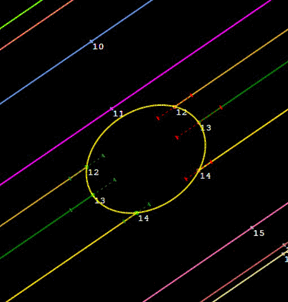
The March 7, 2021 occultation of the variable NY Hydrae by (99942) Apophis was the first occultation by this small asteroid to be predicted and observed. A large number of observers, over 30, spread across the predicted track and observed from 17 locations. Three of these stations were within the path and captured events, as shown in the image where an ellipse is fit to the data. The resulting orbit updates were used to generate predictions of additional events in March and early April. Four additional successful observations were made from a total on 16 stations, one observation on March 22 and three on April 4.
Several news organizations have published articles about the Apophis events. The ESA NEO Newsletter of April 2021, posted here, has a nice paragraph on the March 7 observation. Apophis is no longer observable by radar and by the end of May 2021 will be too far from Earth to be feasible with the equipment used by most observers as the events will be of very short duration. The updates from radar and occultation data have led to the conclusion that it no longer poses a concerning threat of Earth impact in this century.
Additional information on the effort to observe occultations by Apophis is posted on Campaigns.
Occultations can detect the presence of asteroidal satellites and stellar companions. The detection of an asteroidal companion from an occultation is always exciting, as that is relatively uncommon. The presence of stellar companions is more often found from lunar occultations than asteroidal ones as lunar occultations are more frequent.
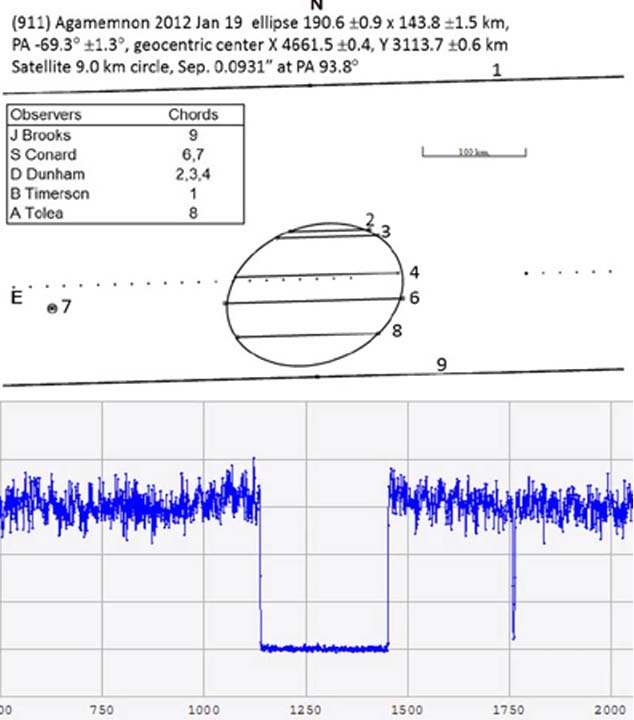
An example of an occultation discovery of an asteroidal companion is the Trojan (911) Agammenon, where the observer Steve Conard recorded two occultations.
Recently, a potential satellite of the asteroid (4773) Arecibo was detected during an occultation and more evidence found from observations of a second occultation by Arecibo. Details of that exciting detection will be posted here in the near future.
Other notable binary objects observed include (90) Antiope, whose observed profile from the occultation on July 19, 2011 is featured on the home page of this website. A very nice opportunity to observe an asteroid with a known companion, (31450) Stevepreston, is coming on 2026 June 29. This asteroid was discovered by the Australian occultation observer, John Broughton, and named for the current IOTA president, Steve Preston. Steve notes that he has property in Colorado near the predicted occultation path. More discussion of this event is available on the [prediction web site] and, as the event date nears
Coordinated observations by multiple observers of a single event across the predicted event path provide size and shape information of the asteroid. If there are no other data on the asteroid shape, this provides the asteroid outline at the time of the observation. The Apophis occultation of 7 March 2021 is an example.
But if there are previous determinations of the shape from light curve analyses, the occultation results can refine those models. Multiple examples of this are available as the shape model analyses improve. Here are two selected from an archive to show the result of careful planning and coordination to observe the occultation in a way that traces the entire outline as well as one for Agenor with a more common result for a small asteroid where a few observations reveal an irregularly shaped object not very good agreement with its model.
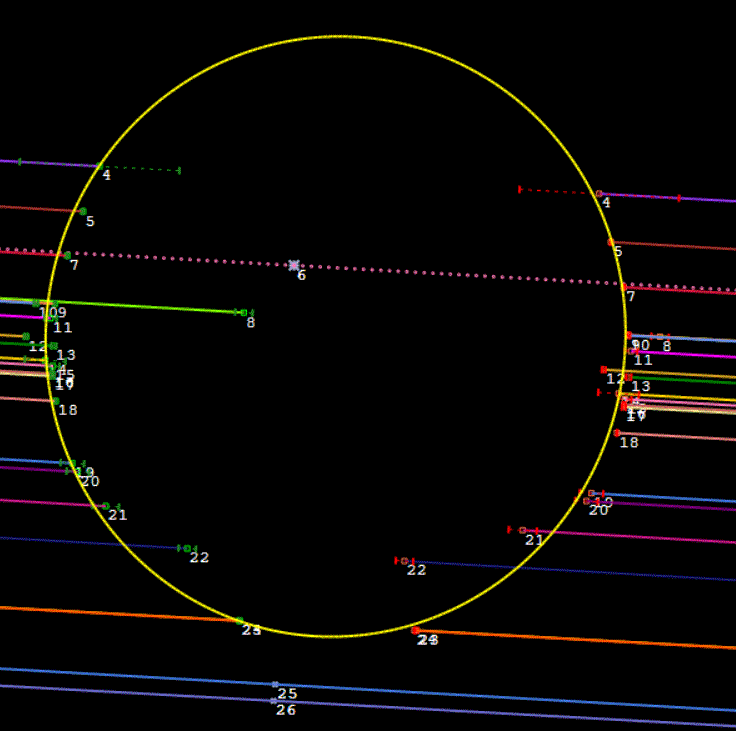
Occultations are also observed of stars by planets or moons orbiting other planets. The occultation by Umbriel, a large moon orbiting Uranus, of the star UCAC4 522-004081 on 2020 Sep 21 was observed by 29 people from 25 stations. One of the observers, J. Bardecker, has prepared a YouTube video of the event which can be viewed here.
There are other ways in which occultation observations aid in scientific investigations, such as by providing improved knowledge of lunar edge features, determining corrections to ephemeris errors, refining the knowledge of stellar positions. Results from occultations observing can also be used to improve the equipment and software used to make these observations.
If you interested in doing your own observations or want to join an observing campaign, here are some suggestions on what to do.
Basically you need
- A telescope
- A computer. A Windows laptop is currently the best option as most of the software used for occultation work is Windows based.
- A camera for the telescope
- Accurate time source (UTC), most often today from GPS receivers.
- Accurate geodetic position source, also available from GPS, but other options are Google Earth Pro and topographic maps.
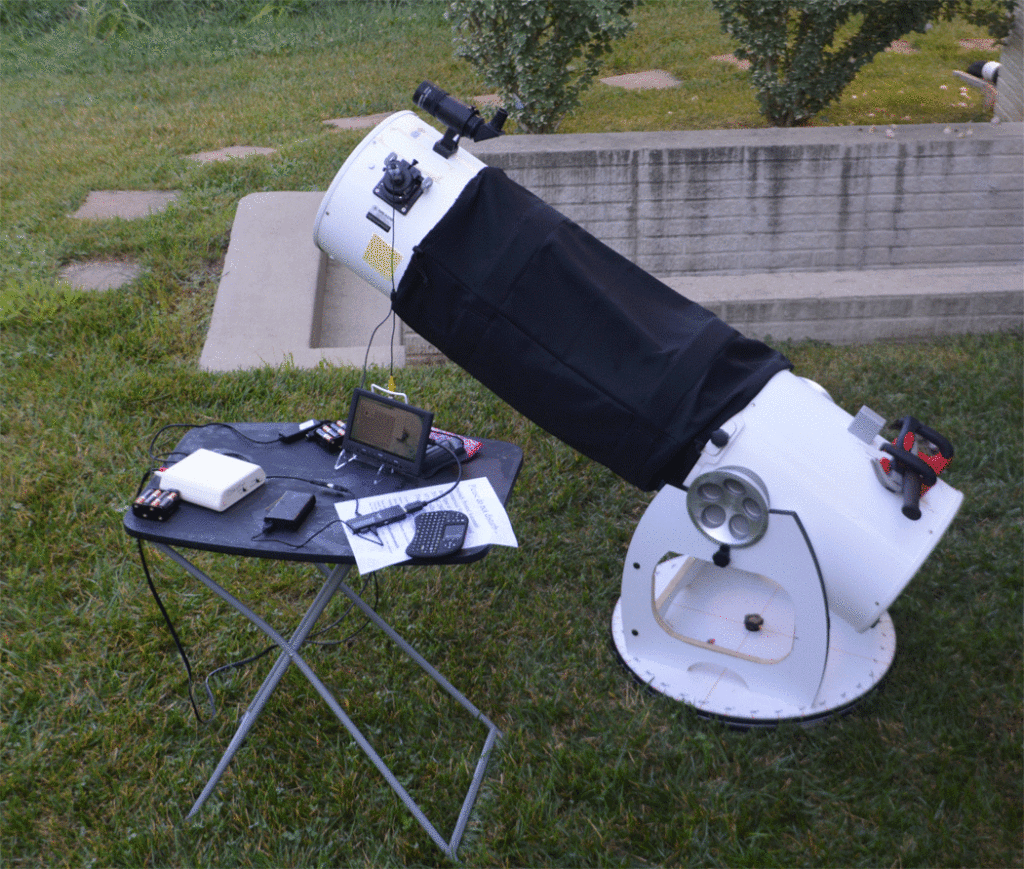
This example shows a 12″ Dobsonian prepared to observe with a small Windows computer, an iView stick, the IOTA Video Time Inserter (VTI), and a Watec camera. The camera AVI video file is time-stamped by the VTI and digitized before it is captured to the computer.
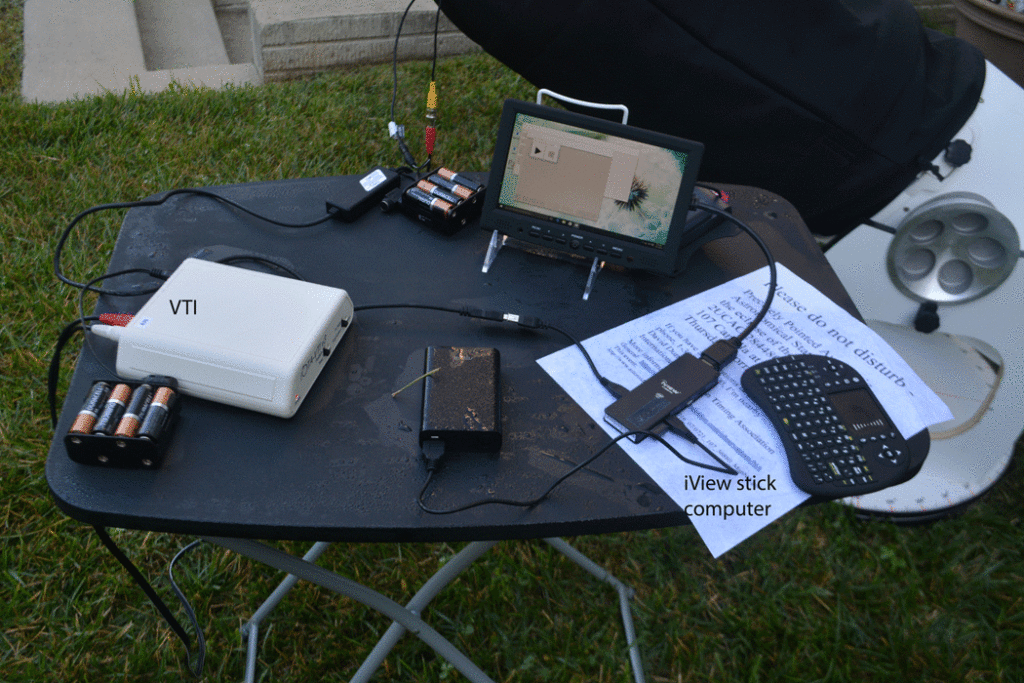
A closer view of the computer setup. The monitor display is from IOTA Video Capture, the video capture tool. The pad to the right of the stick is its mouse and keyboard, and the battery for the computer is the back object to its left.
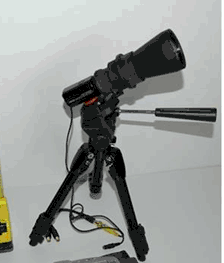
A large aperture telescope is not needed to provide useful data, nor is it necessary for the telescope to be expensive or elaborate. A simple 50mm refractor built from half of a binoculars, the Mighty Mini, can provide good data of stellar occultations to 9th magnitude. You can, should you wish to, make your own Mighty Mini using a 3D printer and an old pair of binoculars.
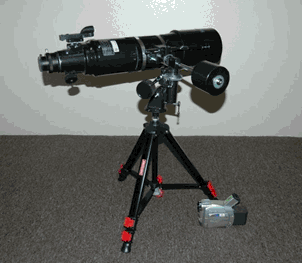
A 120mm refractor on an alt-az mount can be used to observe occultations to 12.5 magnitude. Small telescopes offer the advantage of portability, quite necessary when moving the telescope to locations where the event is predicted.
This IOTA website has more information on observing, cameras, software, and where to find other resources.
Basic information on what an occultation is and how to observe is given in the section Occultations, with more detailed information in the sections under Observing. Also of note is an occultation primer available for download here.
Using a computer to record is described here, with a more detailed discussion on preparing a Windows 10/11 computer for automated capture is available for download.
A discussion on analog cameras for recording occultations is discussed here, which includes information on where they can be obtained.
A very critical piece of an observing kit is the source for time and position. The use of a video time inserter which annotates each frame with GPS time and where to obtain it is described here.
The Journal of Occultation Astronomy, freely distributed here is a good resource for articles detailing past efforts, equipment development, and other topics.
There is a wealth of information available to the observer, as well as many others willing to offer advice and assistance. Membership in IOTA or professional credentials are not required. We do recommend joining an online discussion group or forum. Links for two are given here.
We do hope you find this page interesting and informative. If you’d like to make a comment on it, you can send an email to the officers via the contact page.
